
How Do You Set Up the Magento 2 Premium Blog Extension?
Are you looking to upgrade your online store's SEO content strategy? The Magento 2 premium blog extension can create and manage engaging blog content.
This tutorial will explain how to configure the Magento 2 extension.
Key Takeaways
-
Magento 2 blog extension integrates into e-commerce stores.
-
SEO features like meta tags and XML sitemaps improve visibility.
-
RSS feeds and sitemaps speed up content indexing.
-
Social media integration increases content reach and traffic.
-
Comment moderation tools improve user engagement.
What is a Premium Blog Extension for Magento?
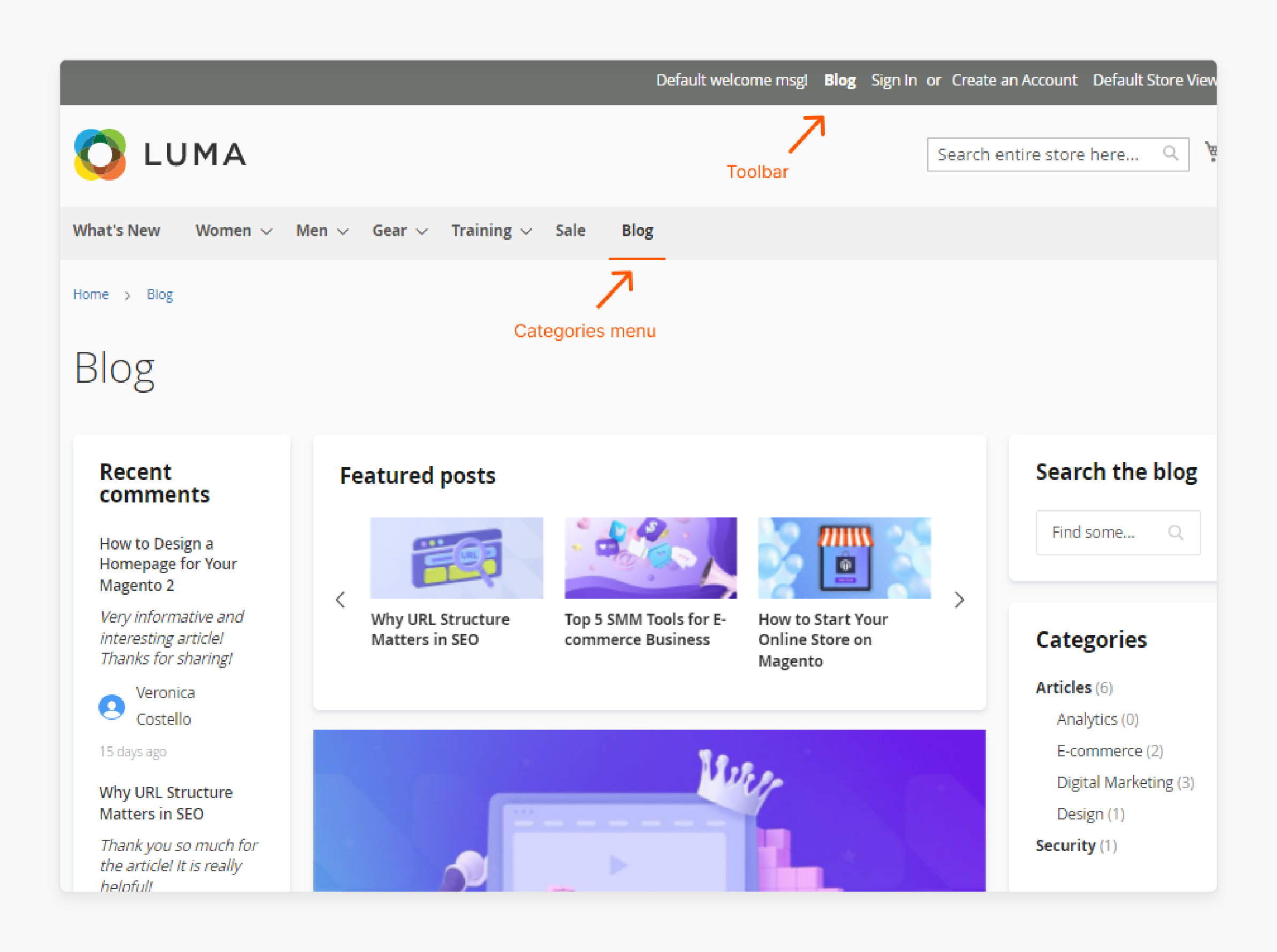
A Magento premium blog extension integrates a functional blog into your store. It offers features to help create and manage blog content.
The extension features an intuitive dashboard that allows for efficient blog management, including:
-
Drafting and editing posts.
-
Managing existing content.
-
Adding new blog entries.
-
Scheduling posts for future publication.
This integration helps users:
-
Create compelling content.
-
Format articles using rich text editing tools.
How do Magento 2 Blog Extensions Improve SEO?
1. Customizable Meta Tags
-
Meta titles are the first impression users get in search results. A well crafted title can attract clicks and drive traffic to your site.
-
Meta descriptions give a summary of the blog post. Readers understand what to expect and click the link.
-
Include relevant Magento keywords in your meta tags to increase the ranking. Optimized tags ensure your content is more visible.
2. XML Sitemap Integration
-
An XML sitemap acts as a roadmap for search engines. It lists all the important pages on your site, including blog posts.
-
When search engines crawl the site, they refer to this sitemap. It finds and indexes your content.
-
An updated ecommerce XML sitemap improves the post's visibility. This is particularly important as you publish new content. Search engines can locate and index these posts. It improves their visibility in search results.
3. Rich Snippets and Structured Data
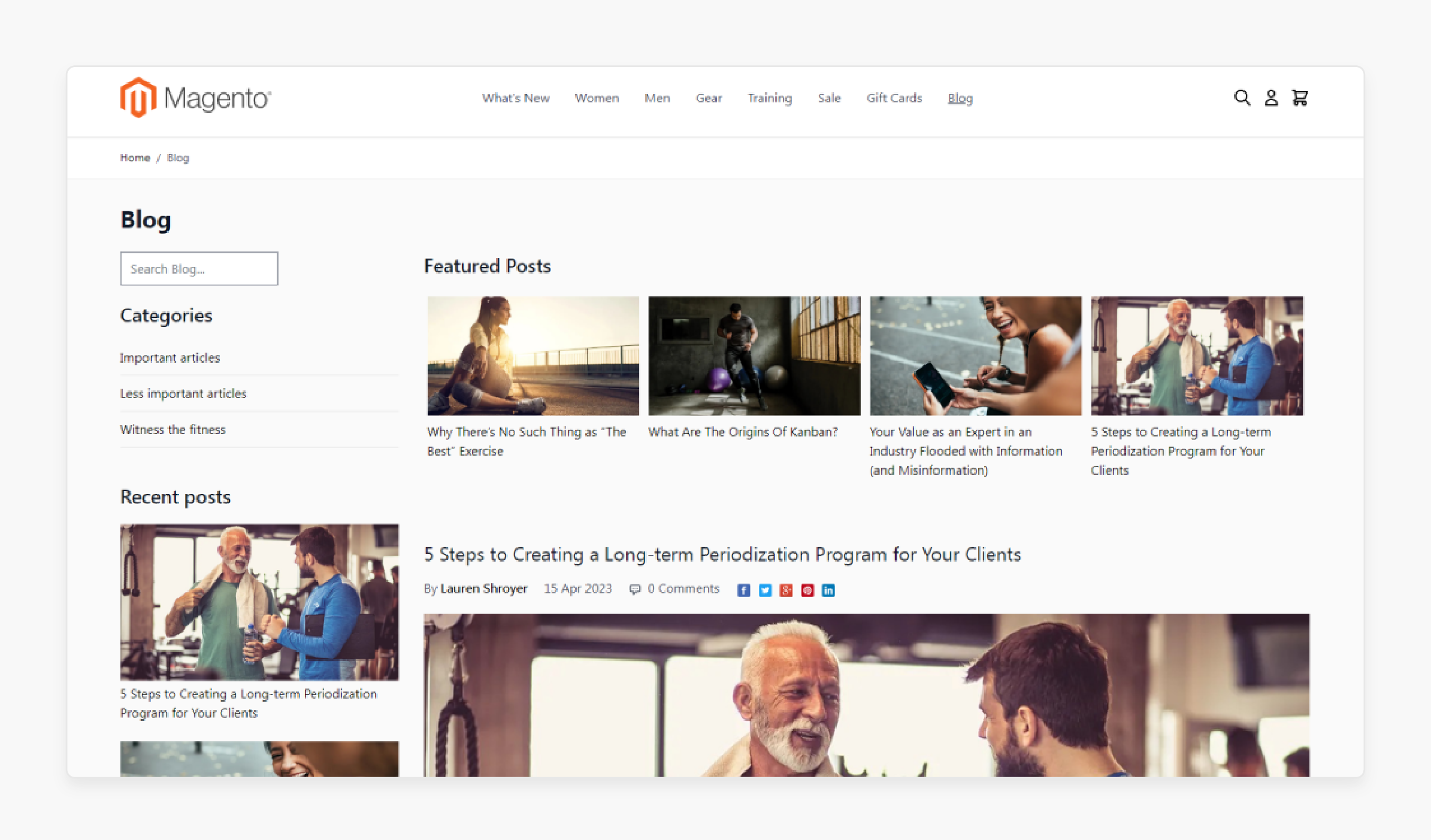
-
Rich snippets improve the way your content looks in search engine results. These snippets provide more information for users for clear context.
-
Structured data provides information and classifies the content. You can show elements of your posts, like:
-
Ratings
-
Reviews
-
Publication dates
-
-
This extra context makes your listings more informative and appealing.
-
Search engines recognize rich snippets and show them in search results. Users are more likely to click on a result that has extra information.
4. Canonical URLs
-
Canonical URLs are an important feature offered by many premium blog extensions. They help prevent duplicate content issues.
-
Duplicate content occurs when identical content appears on many pages. This can confuse search engines and dilute the ranking of your pages.
-
With canonical URLs, you specify the preferred version of a blog post. This tells search engines which URL to index and consider as the content source. As a result, you can join the ranking signals for that content to a single URL.
5. Open Graph Tags
-
Magento Open graph tags enhance the visibility of your blog posts on social media. These tags give you control over how your content appears when shared. This includes defining the title, description, and image accompanying your blog post links.
-
Open graph tags ensure users display the right information when sharing your posts. A well-crafted title and engaging image can attract more attention. This increases the likelihood that users will click the shared link to read your content.
-
Having appealing and informative posts can lead to higher engagement rates. Users are more inclined to interact with appealing content in their feeds. This interaction can result in more shares, likes, and comments.
-
Another benefit of using open graph tags is driving more traffic to your site. When your blog posts attract, they can capture the interest of a broader audience. More users may visit your site to explore your content.
Steps to Configure the Premium Blog Extension for Magento 2
Step 1: Display Settings
-
Log in to the admin panel after installing the extension.

-
Expand the Display Settings and enter the Blog Link title.
-
Choose options to display the title on the site.
-
Enable the Blog Categories Menu to display categories as a submenu.
Step 2: SEO Settings

-
Expand the SEO Settings and enter the Blog Title and Label.
-
Enter the Meta Keywords and descriptions for the blog.
-
Choose a Meta Robot function to show the search engines how to index.
-
Under Layouts, arrange the blocks on the website.
-
Choose a URL Postfix.
-
Set the number of Posts per Page and include the CMS Summary.
-
Open Post Settings and display attributes like Author's name, READ time, and date.
-
Choose the Dimensions of the image.
-
Edit the Post Rich section to show the Title and the author's name.
Step 3: Categories, Comments, & Social Buttons
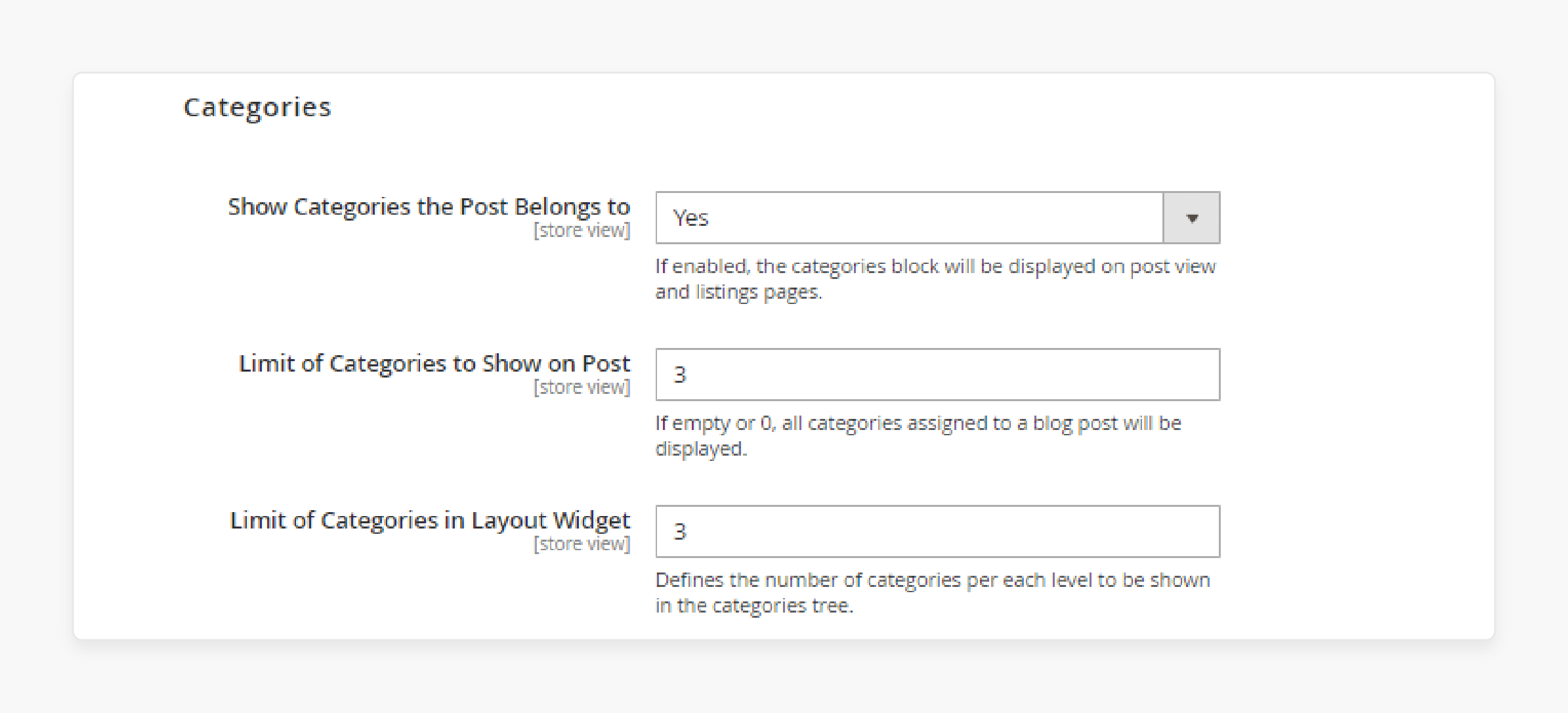
-
Select Yes to show the categories the post belongs to.
-
Enter a number to limit the number of categories to show.

-
Expand Comments and select Yes to receive credentials to comment.
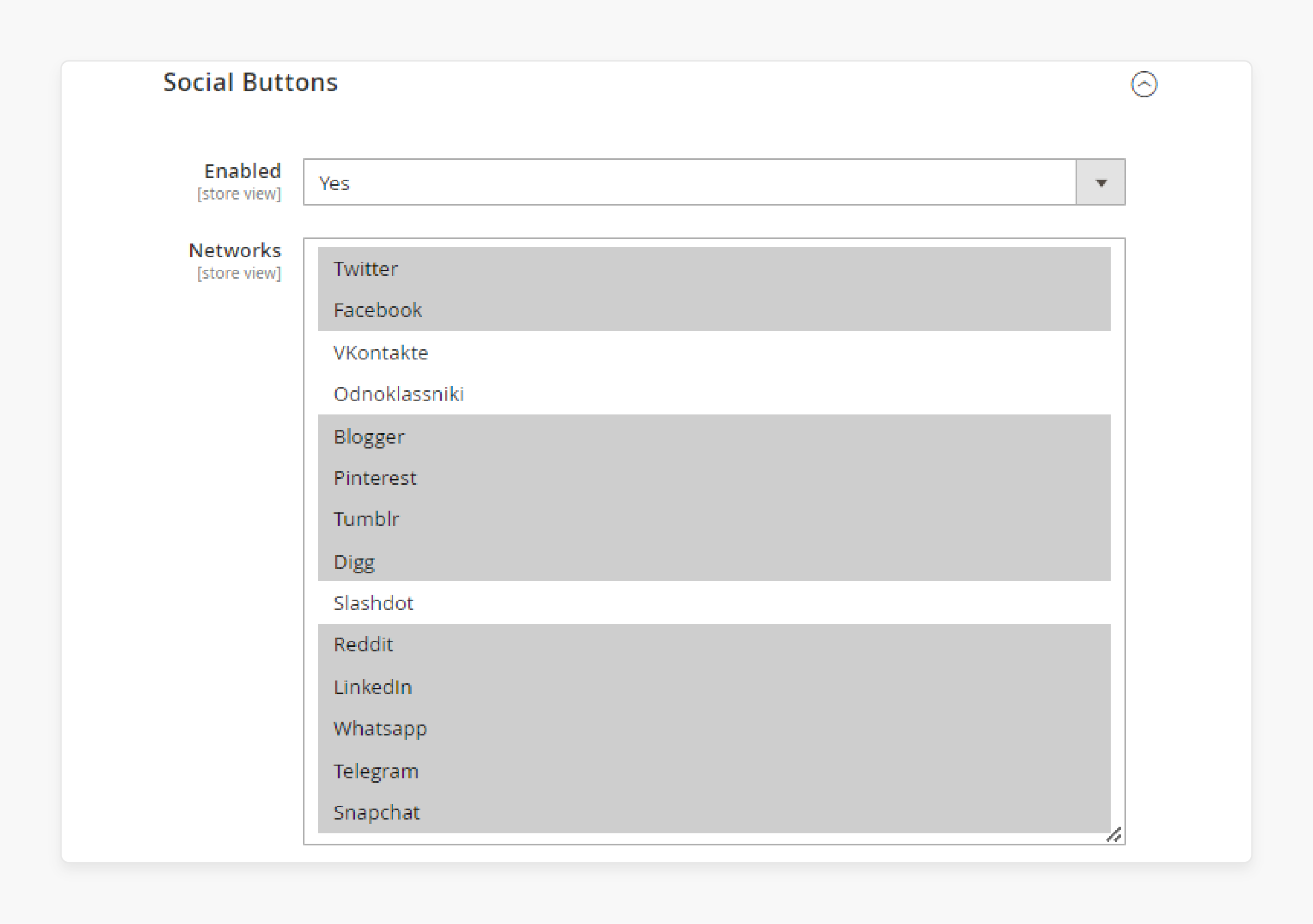
-
Enable Social Buttons and choose the social media platforms.
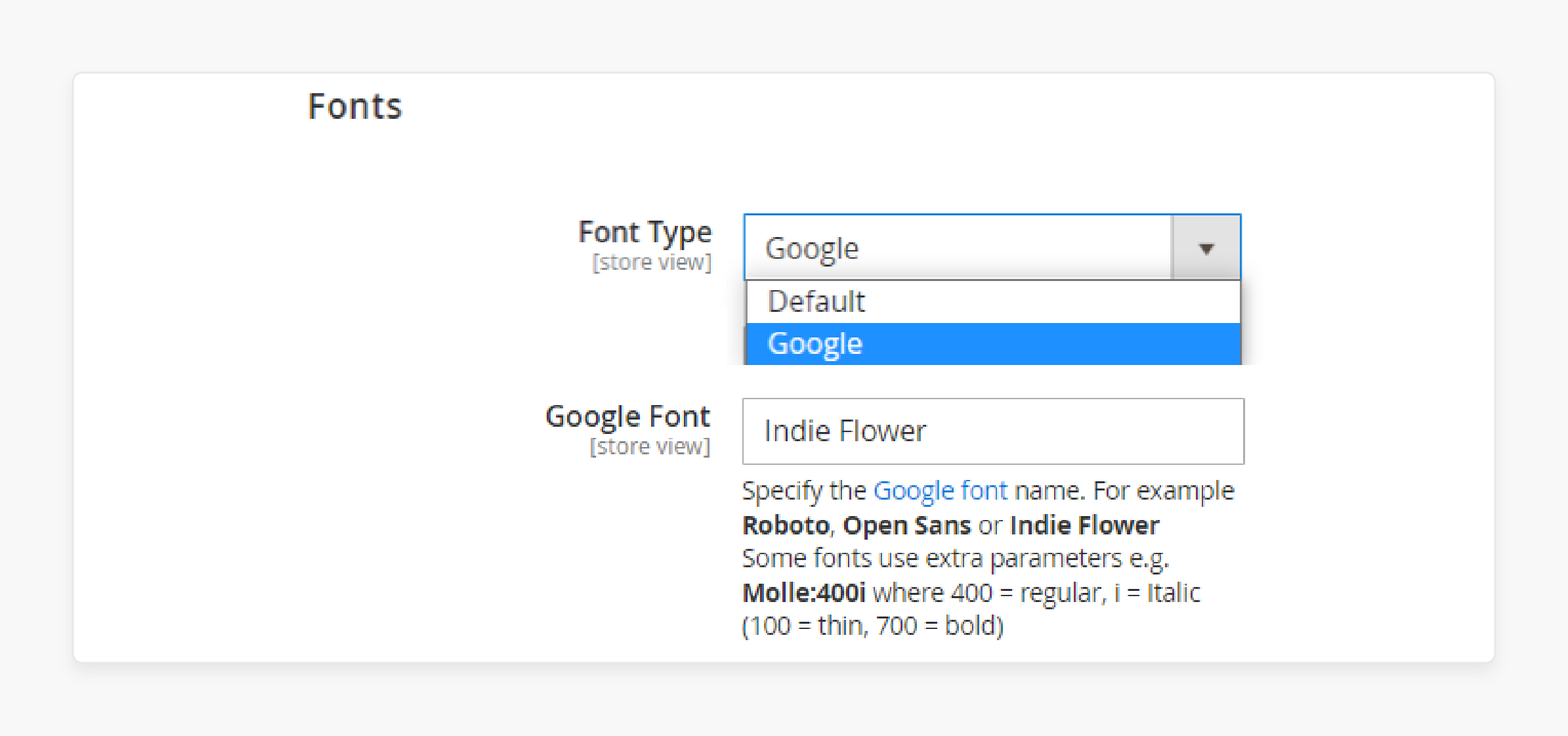
-
Enable Blog Search and choose the Google Fonts.
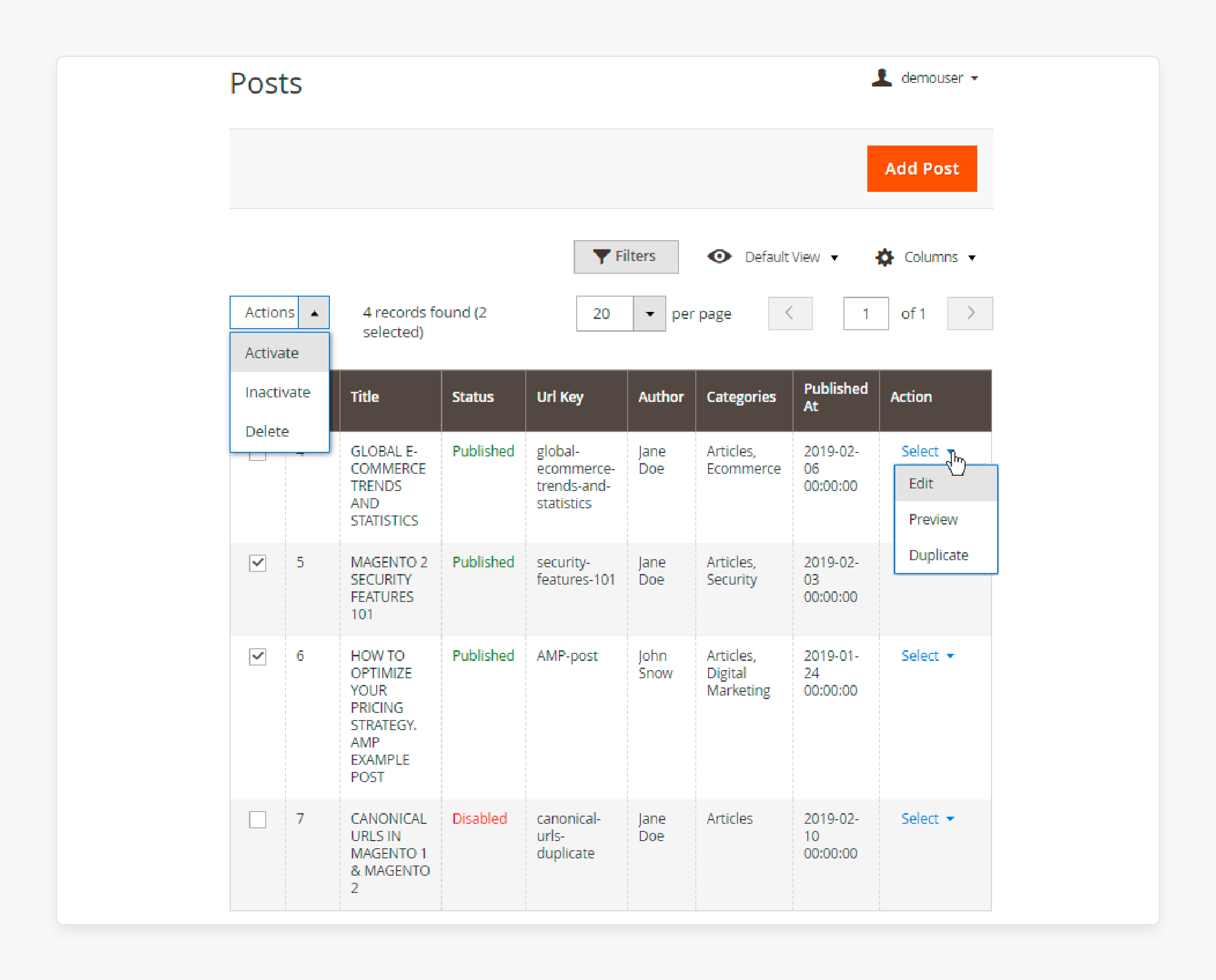
-
Go to Content > Posts to view, create, and edit posts.
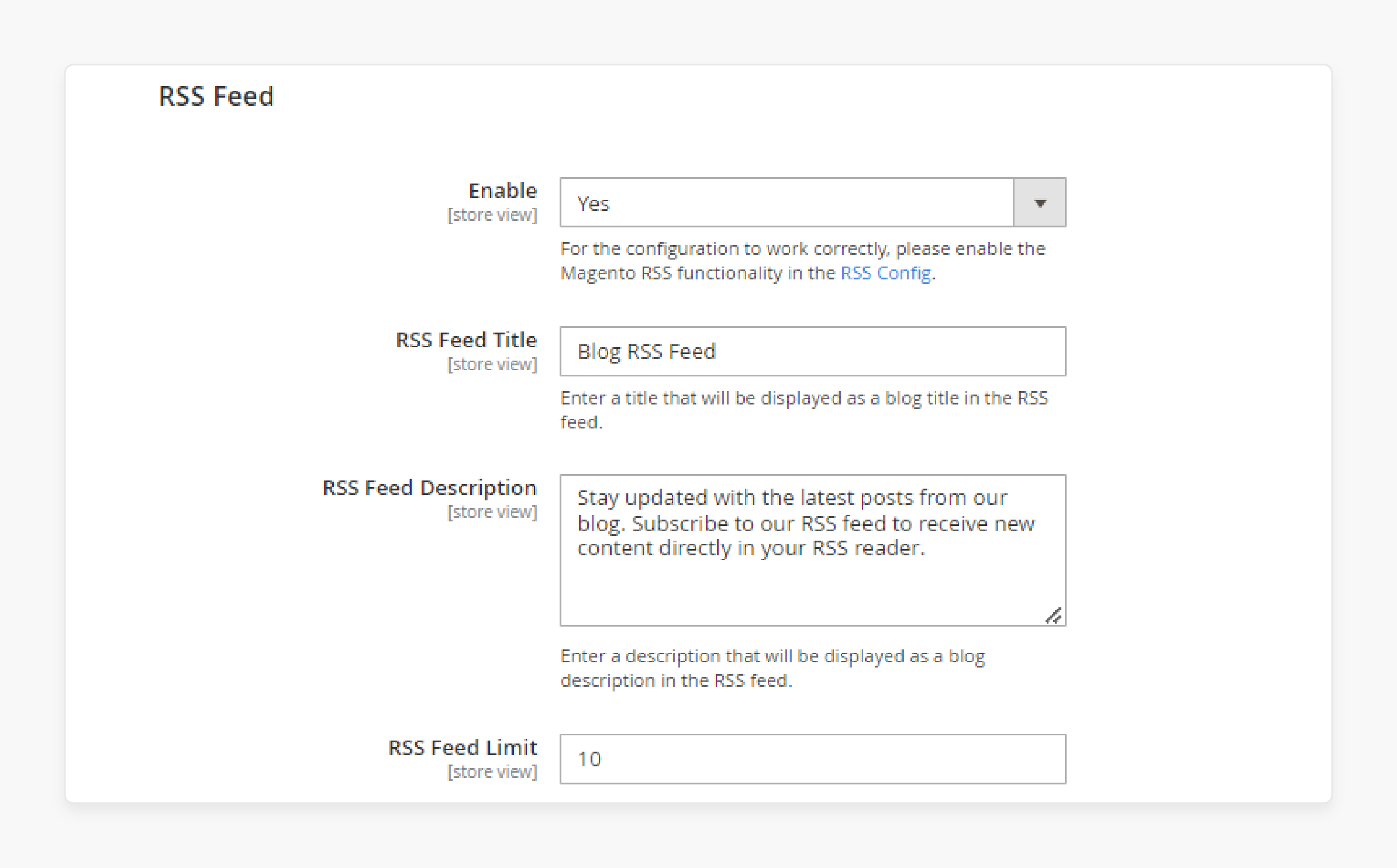
-
Add the Open Graph Meta Data and descriptions.
How do RSS Feeds & XML Sitemaps Enhance Blog Visibility?
1. Faster Indexing and Fresh Content
-
RSS feeds act as instant alerts for search engines. When you publish a post, the RSS feeds search engines like Google and Bing. This notification reduces the waiting time for crawlers to find content.
-
Fresh content signals increase Magento SEO performance. Search engines rank recently updated websites. Blogs using RSS feeds to share regular updates signal freshness to algorithms. This is for time-sensitive niches like tech reviews or trending topics.
-
Blogs with consistent posts gain algorithmic favor. Google’s crawling bots track content update frequency. A blog posting daily or weekly appears more authoritative than one update.
-
XML sitemaps streamline how search engines crawl your blog. They use <priority> tags to highlight key pages like blogs. This guides crawlers to focus on high-value content first.
-
Large blogs with 1,000+ pages benefit the most. Without sitemaps, crawlers might waste time on low-priority pages.
-
Complex navigation becomes manageable. Blogs with layered categories or tags risk confusing crawlers.
2. Backlink Generation Through RSS Feeds
-
Syndicating blog content via RSS feeds expands its reach across platforms like Feedspot. These platforms add content for niches, attracting publishers and bloggers.
-
Other websites may reference your posts as sources. These create organic backlinks when your posts appear there.
-
Submitting an XML sitemap to Google Search Console speeds up indexing for new posts. Search engines use sitemaps as a checklist to crawl pages. For instance, a new product blog post gets indexed within hours instead of days.
3. Social Media and Traffic Growth
-
Auto-posting content via RSS feeds to platforms like Facebook and Twitter saves time. Automated sharing ensures new posts reach followers. This drives referral traffic to your site.
-
RSS widgets on websites turn visitors into subscribers. Placing a widget in the sidebar or footer lets users subscribe with one click.
-
Subscribers receive updates, creating a loyal audience. A food blog could use this to notify readers about recipes, encouraging repeat visits.
-
Orphan pages, like archived posts or old guides, often lack internal links. Without these connections, search engines struggle to find them.
-
XML sitemaps solve this by listing every page, including unlinked ones. This ensures no valuable content misses being on the search.
4. Content Syndication, Multilingual and Multimedia Support
-
RSS feeds let third-party sites republish your blog content. This expands your audience without risking duplicate content penalties.
-
Search engines recognize the source through RSS metadata. Syndicated content often links back to the original post.
-
XML sitemaps enhance multilingual blogs using hreflang tags. These tags tell search engines which language versions of a page exist.
-
A Spanish fashion blog, for instance, can direct users to its English version. Sitemaps include metadata for images and videos, like alt text or captions. This helps search engines index multimedia content.
Comment Moderation Tools in Magento 2 Premium Blog Extensions
| Tool | Description |
|---|---|
| Auto/Manual Approval | Admins choose whether comments need manual approval. |
| Guest Comment Controls | Allow/block unregistered users from commenting; need email/name fields for guest posts. |
| ReCaptcha Integration | Block spam with Google ReCaptcha (v2/v3); configurable in backend settings. |
| Email Notifications | Admins receive alerts for new comments. Users get notified about replies or comment approvals. |
| GDPR Compliance | Add consent checkboxes for data privacy compliance, linking to privacy policy pages. |
| Third-Party Integrations | Support for Facebook Comments for moderation via external platforms. |
| Comment Editing/Deletion | Edit comment text, delete inappropriate content, or reply from the admin panel. |
| Status Tracking | Filter comments by status: Approved, Pending, Not Approved. |
| Per-Post Disabling | Turn off comments for specific posts via backend settings. |
| Spam Filters | Use Akismet (in some extensions) or keyword blacklists to auto-flag spam. |
| User Role Restrictions | Restrict commenting privileges to logged-in users or specific customer groups. |
FAQs
1. How can I create a blog page in my ecommerce store?
You need to install the Magento 2 blog module. This module will allow you to create blog posts and manage content. You can customize the layout and choose settings such as title and SEO friendly features.
2. What is the Magento blog extension for SEO?
This extension provides advanced SEO features. These are meta tags, XML sitemap integration, and rich snippets. It helps improve the visibility in search engines and attract traffic.
3. How can I improve blog navigation in my Magento store?
Enable the blog categories menu. This will display categories as a submenu, helping visitors find relevant blog posts. You can also organize posts by tags or add pagination to navigate your blog.
4. Can I make my blog SEO friendly with the Magento blog module?
Yes, you can make it by utilizing the SEO features of the Magento 2 Blog Module. This includes optimizing meta tags, Magento canonical URLs, and using Open Graph tags. These SEO practices will help ensure your blog ranks well in the results.
5. How do I create blog posts in my Magento store?
You must first install the module to make your blog. Afterward, go to the admin panel and navigate to the blog section. You can add your content, set a featured image, and schedule posts from there. This ensures a smooth content management experience.
Summary
The Magento 2 premium blog extension has advanced features to improve post visibility. This tutorial explains how to configure blog posts using the extension. Here is a recap:
-
Magento 2 Premium Blog Extension simplifies content management.
-
Customizable SEO features improve blog post visibility.
-
RSS feeds and XML sitemaps enhance indexing.
-
Social media integration drives traffic to posts.
-
Comment moderation tools ensure better engagement management.
Choose managed Magento hosting with premium blog extensions to increase traffic and growth.




